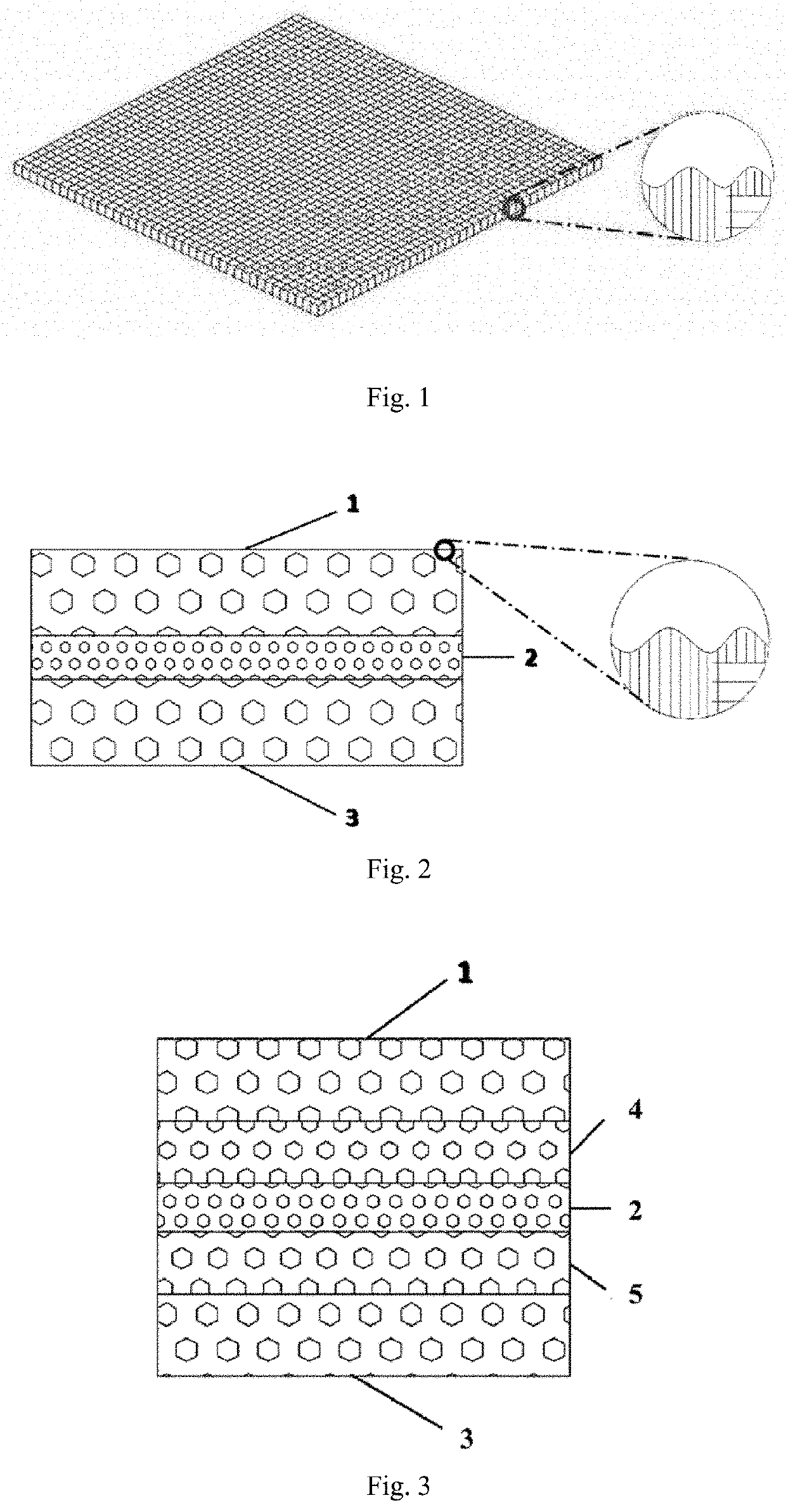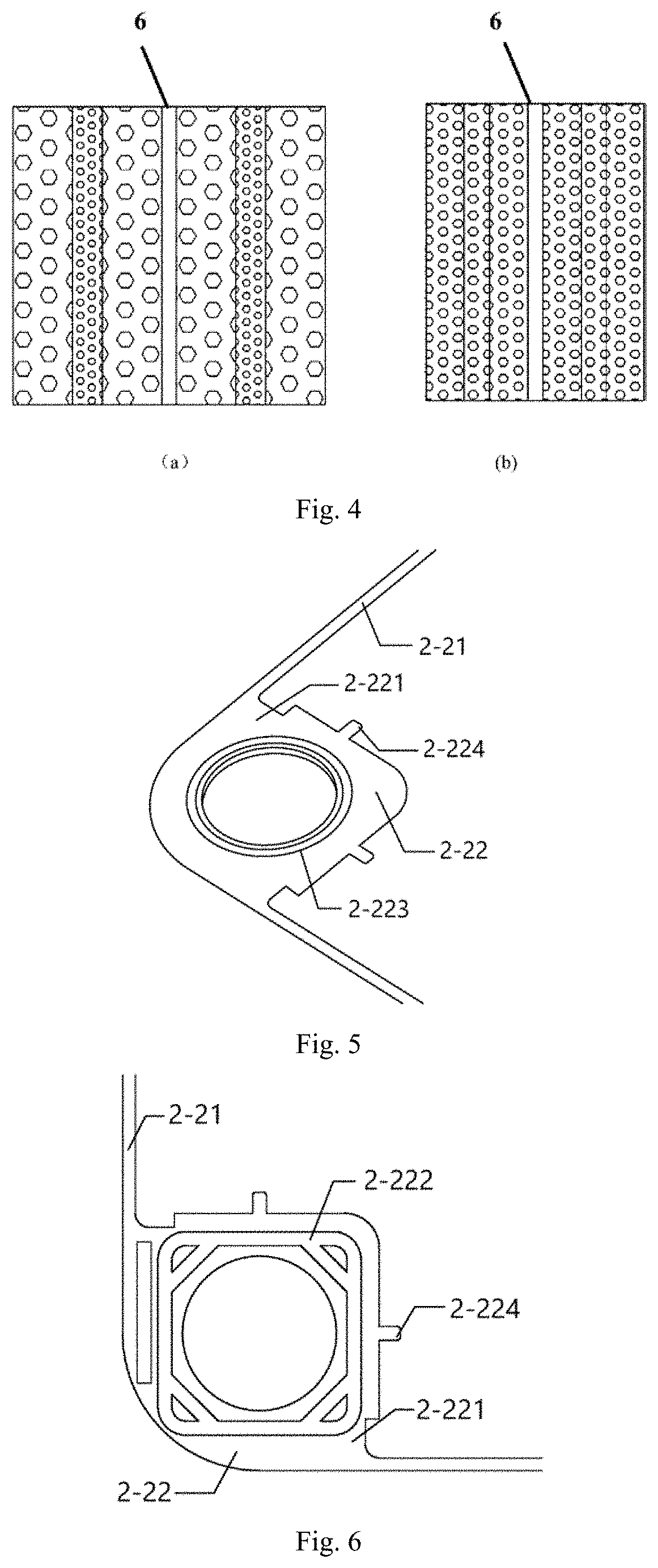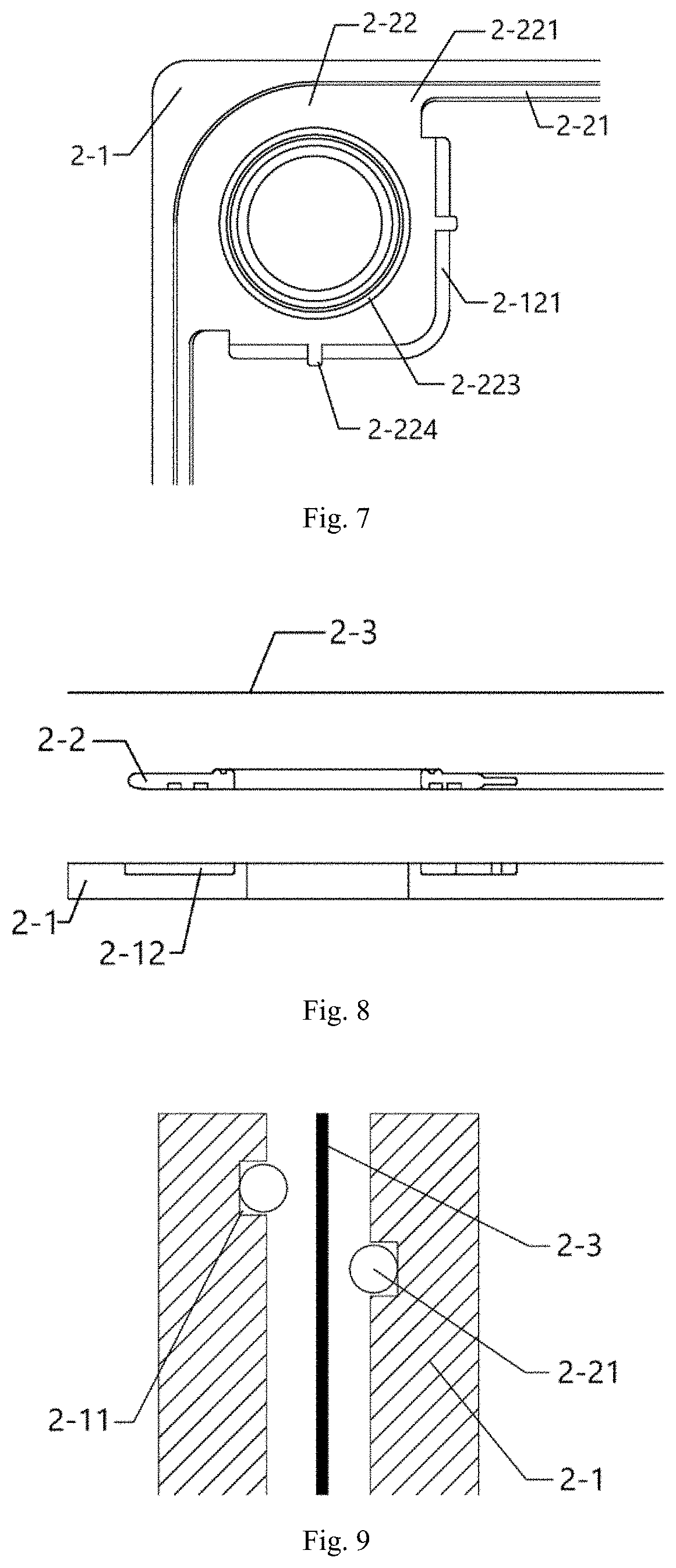Electrode structure including electrode fiber having higher density of vertical tows to parallel tows, flow battery stack including the same, and sealing structure including sealing gaskets connected by sealing wire
a flow battery and electrode fiber technology, applied in the field of flow battery technology, can solve the problems of large difference in flow rate and resistance of electrolyte at the center and both sides of the surface of the electrode, direct affecting the reliability, safety and cost of the entire flow battery system, and reducing contact resistance. , good mechanical properties, the effect of reducing the contact resistan
- Summary
- Abstract
- Description
- Claims
- Application Information
AI Technical Summary
Benefits of technology
Problems solved by technology
Method used
Image
Examples
example 1
[0038]As shown in FIG. 2, an electrode structure comprises three layers of electrode fibers, which are an electrode fiber layer 1 near a bipolar plate, an electrode fiber layer 2 located at a center and an electrode fiber layer 3 near an ion membrane side, wherein the three layers of raw materials are all polyacrylonitrile-based material, a density ratio of the vertical tow and the parallel tow is 6:4, and a diameter of the vertical tow is 6 μm; the structure of the electrode fiber layer 1 and the electrode fiber layer 3 is as follows: porosity of 95% and thickness of 3 mm; and the electrode fiber layer 2 has a porosity of 92.5% and a thickness of 1.5 mm, and the surface contacting with the graphite bipolar plate or the ion membrane is provided with a convex spinous structure and has a high and low undulation shape. When the electrode is in close contact with the bipolar plate with an overall porosity reaches 91%, the vertical resistivity thereof is recorded, then the electrode is a...
example 2
[0041]As shown in FIG. 3, an electrode structure comprises five layers of electrode fibers, which are an electrode fiber layer 1 near a bipolar plate, an electrode fiber layer 2 located at a center and an electrode fiber layer 3 near an ion membrane side, an electrode fiber layer 4 disposed between the electrode fiber layer 1 and the center electrode fiber layer 2, and an electrode fiber layer 5 disposed between the electrode fiber layer 2 and the electrode fiber layer 3, wherein the five layers of raw materials are all polyacrylonitrile-based material, a density ratio of the vertical tow to the parallel tow is 7:3, and a diameter of the vertical tow is 18 μm. The structure of the electrode fiber layer 1 and the electrode fiber layer 3 is as follows: a porosity of 94% and a thickness of 2 mm; the structure of the electrode fiber layer 4 and the electrode fiber layer 5 is as follows: a porosity of 93% and a thickness of 1 mm and the electrode fiber layer 2 has a porosity of 92% and a...
example 3
[0043]As shown in FIG. 3, an electrode structure comprises five layers of electrode fibers, which are an electrode fiber layer 1 near a bipolar plate side, an electrode fiber layer 2 located at a center and an electrode fiber layer 3 near an ion membrane side, an electrode fiber layer 4 disposed between the electrode fiber layer 1 and the electrode fiber layer 2, and an electrode fiber layer 5 disposed between the electrode fiber layer 2 and the electrode fiber layer 3. Wherein the raw materials of the electrode fiber layer 1, electrode fiber layer 3, electrode fiber layer 4 and electrode fiber layer 5 are polyacrylonitrile-based material, while the raw material of the electrode fiber layer 2 is rayon-based material, a density ratio of the vertical tow to the parallel tow is 6.5:3.5, and a diameter of the vertical tow is 7 μm. The structure of the electrode fiber layer 1 and the electrode fiber layer 3 is as follows: a porosity of 95%, a thickness of 2 mm, and the surface contacting...
PUM
| Property | Measurement | Unit |
|---|---|---|
| porosity | aaaaa | aaaaa |
| porosity | aaaaa | aaaaa |
| thickness | aaaaa | aaaaa |
Abstract
Description
Claims
Application Information
 Login to View More
Login to View More - R&D
- Intellectual Property
- Life Sciences
- Materials
- Tech Scout
- Unparalleled Data Quality
- Higher Quality Content
- 60% Fewer Hallucinations
Browse by: Latest US Patents, China's latest patents, Technical Efficacy Thesaurus, Application Domain, Technology Topic, Popular Technical Reports.
© 2025 PatSnap. All rights reserved.Legal|Privacy policy|Modern Slavery Act Transparency Statement|Sitemap|About US| Contact US: help@patsnap.com



